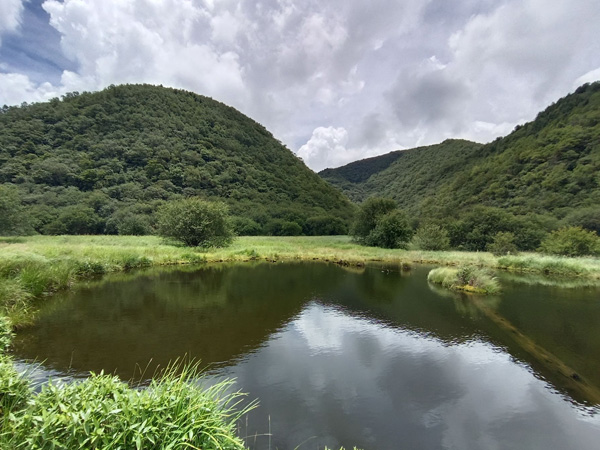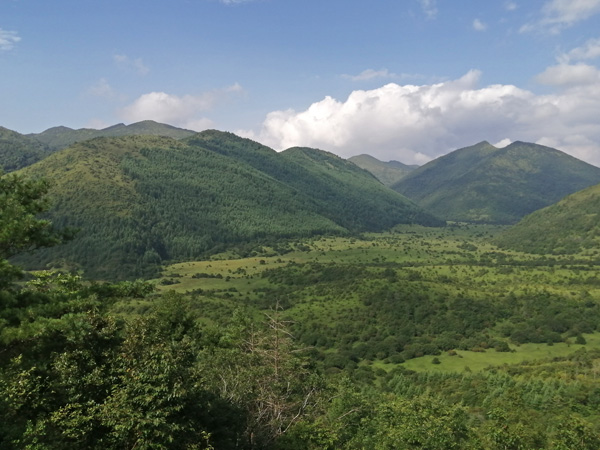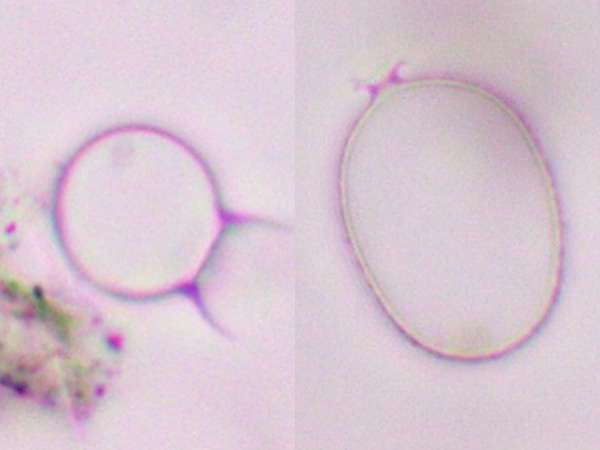Analysing lake sediments helps understand the consequences of global environmental change for freshwater ecosystems
Global environmental changes, such as temperature and nitrogen supply increases, favour faster decomposition of dead organic matter accumulated in the soil. As a result, large amounts of dissolved organic carbon (a mixture of humic substances and other organic compounds) are produced, which enters rivers and lakes through groundwater and surface runoff, causing water "brownification". This phenomenon has serious consequences for the functioning of aquatic ecosystems (e.g., due to changes in the trophic structure) and their utility values (e.g., the provision of drinking water).
Recently, Science of the Total Environment published a paper in which scientists from China, in cooperation with phycologists from our Institute, Jolanta Piątek and Konrad Wołowski, reconstructed over 200 years of dynamics of the assemblages of diatoms, chrysophytes (stomatocysts) and chironomids in Mulong Lake – one of the mountain lakes of the Three Gorges Region (central China) – against the background of changing environmental conditions. The reconstruction was based on sediments collected from the bottom of the lake, the layers of which were dated with the 210Pb isotope. The authors showed that the changes in the studied groups of organisms were asynchronous (occurring in different decades), which could be due to their different responses to changes in temperature, nitrogen availability and the development of littoral mosses. The trophic and non-trophic relationships were also an important factor influencing the dynamics of groups. Chironomid populations, at the peak of their occurrence, limited algal growth. Chrysophytes, as autotrophic organisms, but capable of heterotrophy (using soluble and insoluble organic compounds), counteracted water brownification, thus having a positive impact on benthic organisms.
The study results show that the response of the aquatic ecosystem to environmental changes largely depends on the organisms inhabiting this ecosystem – their sensitivity to external factors and the complexity of the relationships between these organisms.
Original article:
Chen X., Bai X., Langdon P.G., Piątek J., Wołowski K., Peng J., Zheng T., Cao Y. 2024. Asynchronous multitrophic level regime shifts show resilience to lake browning. Science of The Total Environment 912: 168798. DOI
More information about the diversity and phenotypic variability of stomatocysts (resting stages of chrysophytes) in peat and lake sediments from the study area can be found in the previous works of our phycologists:
Bai X., Piątek J., Wołowski K., Yang T., Chen X. 2023. Sedimentary chrysophycean stomatocysts from an alpine lake in the Three Gorge Reservoir region, central China. Nova Hedwigia 116: 193–230. DOI
Bai X., Piątek J., Wołowski K., Bu Z.-J., Chen X. 2021. Chrysophyte stomatocysts and their associations with environmental variables in three peatlands in the subtropical monsoon climate zone of China. Ecological Indicators 121: 107125. DOI
Bai X., Piątek J., Wołowski K., Bu Z., Chen X. 2020. New stomatocyst discoverd in Sphagnum, peatlands, Central China. Phytotaxa 477: 151–170. DOI

Mulong Lake, from which sediment cores were collected.
Photo: Jia Peng

Mountainous landscape of the Three Gorges Region (central China).
Photo: Jia Peng

Examples of stomatocysts (resting stages of chrysophytes) found in the sediments of Mulong Lake.
Photo: Xue Bai





